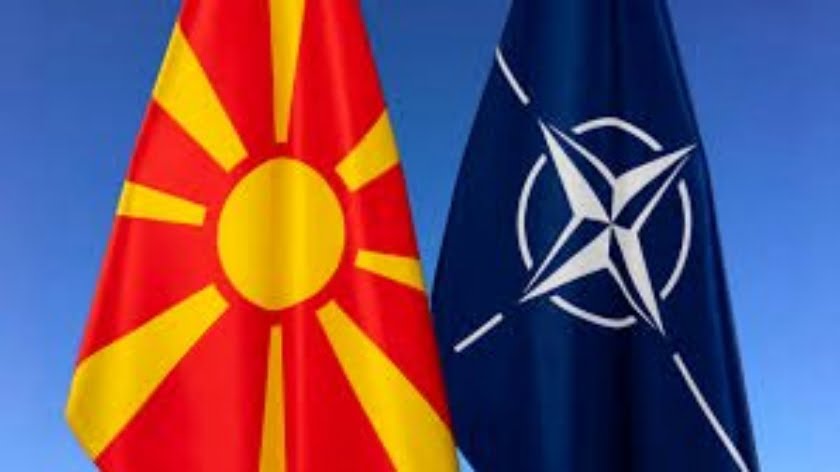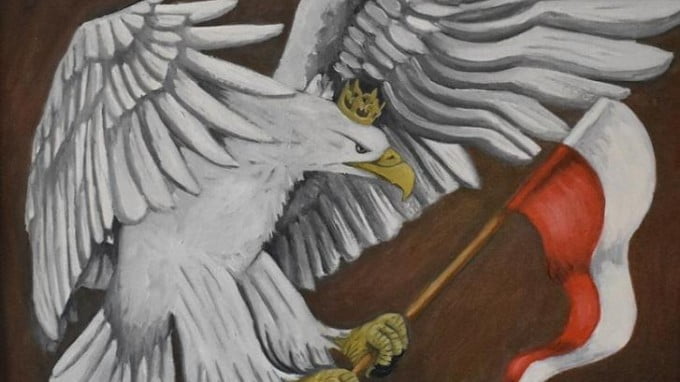The Tightening of the NATO Noose
NATO’s military noose round Russia’s borders is being tightened in order to force Moscow to react to surging provocation, Brian Cloughley writes.
One of the most recent developments on the NATO front line was a meeting of the so-called ‘Bucharest Nine’ which the analytical agency Stratfor states “is a group of NATO’s easternmost members, including Bulgaria, the Czech Republic, Estonia, Hungary, Latvia, Lithuania, Poland, Romania and Slovakia. Most of these countries share strategic interests on issues such as deterring potential Russian aggression, keeping close cooperation with the United States, diversifying their sources of energy, and developing joint infrastructure projects.” The purpose of the video get-together, attended by President Biden and NATO Secretary-General Jens Stoltenberg, was, according to the US-NATO military alliance “to take the agenda forward” in its mission “to consolidate views on issues of interest in the Alliance for the participating nations, and to support joint security projects.”
In other words, the purpose of the Bucharest Nine is to help NATO exert even further pressure on Russia’s western border regions, as part of the US-NATO confrontation that is being ramped up while the US and its NATO allies retreat from Afghanistan where they have been defeated in a war that has humiliated the world’s most expensive and sophisticated military machines. They’ve been beaten into the ground by a bunch of raggy-baggy militants who don’t have any strike aircraft or drones or tanks or artillery. The Taliban have no intention of permitting democracy in Afghanistan, when they eventually take over, after NATO’s retreat, and the country will be plunged into a maelstrom of theocratic bigotry and barbarity.
NATO followed the US into Afghanistan in August 2003 with the mission “to enable the Afghan authorities and build the capacity of the Afghan national security forces to provide effective security, so as to ensure that Afghanistan would never again be a safe haven for terrorists.” It declares that the war and the transition to a training role in 2015, have represented “NATO’s longest and most challenging mission to date: at its height, the force was more than 130,000 strong with troops from 50 NATO and partner nations.” And they still got whipped by a few thousand militants who objected to the presence of foreign forces in their country.
So it’s back to Europe for US-NATO, having had a fun-war on Libya in 2011 when it blasted the country in the name of peace. This fandango of savagery was named “Unified Protector” but all it protected was the profits of Western arms manufacturers. After seven months of bombing and rocketing the country, involving 9,600 airstrikes, the then NATO Secretary-General Anders Fogh Rasmussen went to Tripoli and declared he was “proud of the part the Organization and its partners played in helping the country and the region.” But as we know only too well, the country is in chaos.
As I wrote six years ago, two prominent figures involved in the US-NATO war on Libya were Ivo Daalder, the US Representative on the NATO Council from 2009 to 2013, and Admiral James G (‘Zorba’) Stavridis, the US Supreme Allied Commander Europe (the military commander of NATO) in the same period. As they ended their war, on October 31, 2011, these two ninnies had a piece published in the New York Times in which they made the absurd claim that “As Operation Unified Protector comes to a close, the alliance and its partners can look back at an extraordinary job, well done. Most of all, they can see in the gratitude of the Libyan people that the use of limited force — precisely applied — can affect real, positive political change.”
But Human Rights Watch reports that the civil war unleashed by the US-NATO destruction of the country has “hampered the provision of basic services including health and electricity. Armed groups on all sides continued to kill unlawfully and shell indiscriminately, killing civilians and destroying vital infrastructure.” And for those seeking to flee the anarchic bedlam there is no support from NATO countries. The US-NATO military intervention in Libya has resulted in a massive number of human rights atrocities of which the world — and especially Obama, Daalder, Stavridis and Rasmussen — should be deeply ashamed. According to Human Rights Watch, “Migrants, asylum seekers, and refugees in Libya — including thousands intercepted at sea while trying to reach Europe and returned by the European Union-supported Libyan Coast Guard — faced arbitrary detention, during which many experienced ill-treatment, sexual assault, forced labour, and extortion . . .”
The only achievements of the US-NATO military alliance in the last twenty years or so have been destruction of Afghanistan and Libya and infliction of destitution and death on countless millions of people. So it is time for the alliance to focus on another sphere of operations in order to try to justify its existence. It’s back to the happy Cold War days, and at the European Council on 6 May Secretary General Stoltenberg was pleased to announce that “Just as we speak, we are deploying thousands of troops as part of a NATO exercise and we do that in Romania. And it demonstrates how we mobilize and exercise NATO troops, and also how we’re able to deploy them across Europe.” Just as they did in Afghanistan.
Then came the meeting of the Bucharest Nine, at which President Biden announced overwhelming approval for the confrontation policy and “expressed his support for enhancing NATO’s deterrence and defence posture, as well as the importance of Allies increasing their resilience against harmful economic and political actions by our strategic competitors… he welcomed the opportunity to engage with these Allies – as well as with NATO Secretary General Jens Stoltenberg, who was also in attendance – about Alliance efforts to meet future threats, which will be discussed at the June 14 NATO Summit.”
It is all stoking up for an ultimate head-to-head, and there is no indication that President Biden will agree to talk with President Putin before the NATO summit. In fact, even if the White House does begin to consider dialogue rather than confrontation it is unlikely that Biden will withdraw his 2020 declaration that “I think the biggest threat to America right now in terms of breaking up our security and our alliances is Russia.”
Biden’s “unshakeable” commitment to NATO, together with his unqualified support for the ’Bucharest Nine’ and for the increasing NATO military buildup along Russia’s borders are open indications of his intention to continue Washington’s confrontation policy, using NATO as the US front-runner. The surge along “NATO’s Eastern Flank” at present involves manoeuvres called “Steadfast Defender”, which Stoltenberg declares “will test NATO’s readiness and military mobility – with forces deploying across land and sea, all the way from North America to the Black Sea region and off the coast of Portugal.”
Although it is evident that US-NATO is not exactly the most efficient military alliance in recent history, given the debacles, destruction and ensuing chaos in Afghanistan and Libya, it is only too evident that it is determined to ensure “rapid reinforcement of NATO’s European Allies by North American forces” in order to exert more military pressure on Russia. As announced by the Pentagon’s John Kirby, the “Defender Europe” NATO manoeuvres in May-June are intended to demonstrate “lethality” in “the Balkan and Black Sea regions in particular”.
NATO’s military noose round Russia’s borders is being tightened in order to force Moscow to react to surging provocation. There is no possible benefit to the world, to humankind, in this belligerent confrontation. But the Pentagon and its sub-office in Brussels are determined to intensify NATO’s border buildup and sabre-brandishing.







